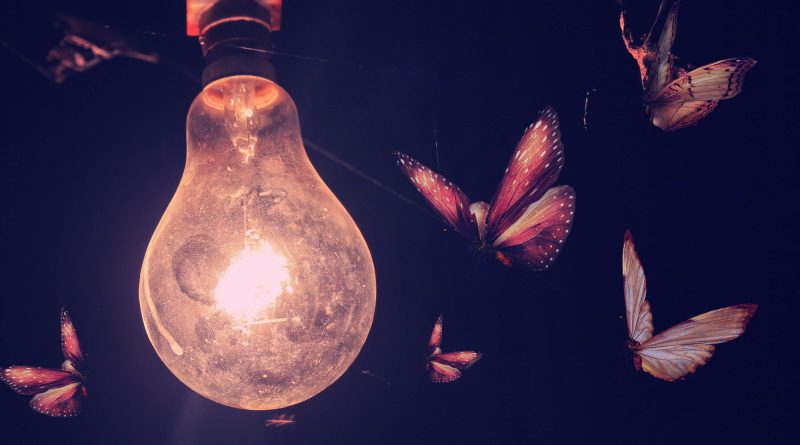If you want to avoid attracting insects, choose this type of light bulb.
If you’ve ever dined outside in the summer, you’ll know it’s a continual balancing act: if you leave the porch lights on, you risk drawing every insect within a 200-metre radius to share your dinner, but if you don’t, you’ll spend half the meal guessing what’s on your fork.
However, new research reveals that the type of light bulb you use may influence this. An ecologist recently announced the findings of a summer-long experiment that revealed a variation in the insect attraction of six of the most common store-bought light bulbs.
Traditional incandescent bulbs were shown to be by far the poorest option for outdoor lighting, whereas warm coloured LED lights (which generate a yellow/orange hue rather than cool blue light) were found to be the best (and least enticing to insects).
The yellow-colored LEDs outperformed ‘bug lights,’ which are bulbs on the market that claim to avoid attracting insects.
Last week, ecologist Michael Justice, who holds a PhD from the University of North Carolina, Greenboro, presented the findings at the American Association for the Advancement of Science meeting.
And, while most of us wish to prevent attracting insects to our light bulbs for selfish reasons (insects = annoyance), Justice’s goals were a little more environmental.
In his conference report, he noted, “This is the first study to directly compare all of the major varieties of bulbs meant for outside residential usage.” “A widespread adoption of LED lighting could significantly lessen the impact of light pollution on insects.”
To figure this out, Justice and his team constructed an exterior funnel trap with a single light bulb inside. Every night, they switched one of the trap’s six different light bulbs, and every morning, they counted the quantity and type of insects that had fallen in.
To guarantee that the Moon’s brightness did not interfere with the results, they mapped the Moon’s phases over a three-month period and ensured that each type of bulb received the same amount of moonlight.
They also tried their best to account for the weather, Justice told Esther Inglis-Arkell of Gizmodo.
If the weather during insect trapping with one bulb was much different than the weather during insect trapping with another, that would muddle the results. Fortunately, we were able to reduce it by examining weather forecasts and cleverly scheduling which bulb was utilized on certain nights.
He’d caught a total of 8,887 bugs in the light trap at the end of the summer. And it was evident that certain bulbs were far more appealing than others.
In general, incandescent light bulbs attracted the most insects, followed by CFL, halogen globes, and cool-colored LEDs. The second best light was the ‘bug light,’ and the warm LED bulb won with the least amount of insects attracted.
Although the most of the results were predictable, Justice was surprised that the bug light didn’t perform better, given that it was touted as specially designed to diminish insect attractiveness.
It was also the sole bulb that attracted different sorts of insects in uneven numbers – the bug light attracted much more insects from the orders Hemiptera, which includes stink bugs, and Dermaptera, which includes earwigs.
“The only thing we could predict ahead of time is that the yellow ‘bug’ light would catch the fewest insects,” Justice explained. “We were shocked to discover that not only was this not the case, but the yellow bulb attracted a large number of earwigs, which may be a nuisance in the home.”
To be clear, the study has not yet been peer-reviewed or published in a journal, so it should be taken with a grain of salt. However, the results persuaded the organizers of one of the world’s most prestigious conferences that they were worthy of presenting, which is no small feat.
For the time being, use warm-colored LED bulbs to light your yard or porch this summer. It not only reduces the number of insects around, but it is also more better for the environment than standard globes.


